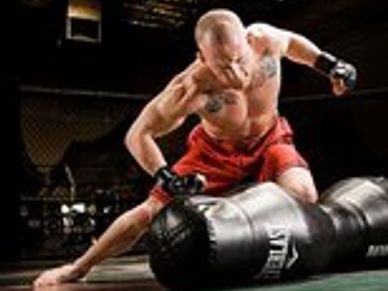TRADITIONAL PATTERNS
TOURNAMENT & CLUB SPARRING
TOURNAMENT & CLUB SPARRING

The patterns (known as Tul, Hyung or Poomse) in Taekwon-Do range from simple symmetrical training patterns up to the graceful and powerful higher grade forms. A pattern is a set of fundamental movements, most of which represent attacking and defensive techniques, set in a logical sequence.
The actual movements represent a kind of martial dance, but looking deeper into the patterns you will find they hold the key to the secrets of Taekwon-Do.
On a superficial level the patterns develop your technique, balance, co-ordination & enhance muscle development, flexibility, agility & breath control. They also enable us to acquire techniques which cannot be obtained from other forms of training.
The patterns were originally formulated to contain various self defence applications including;
The striking of anatomically vulnerable areas, the use of joint locks, throws, dislocation techniques, groundwork, countering, grappling & strangles / chokes.
Each principle was contrived to neutralize an opponent's ability to attack through impeding motor performance, obstructing the air or blood flow & rendering the attacker unconscious or even causing death by attacking the adversary's vital points.
In the ancient Orient, a martial art master was held with great reverence, and in most cases they were also the local doctor or bone-setter. The martial arts were never a commercial interest like today and most masters only had a few or just one apprentice. They patterns were a way to teach the student the various self defence techniques and applications which would have been to much to memorise or write down, so they served as a physical "notebook", to remind the student of the application of the movement as they practiced the patterns. It has been said that it takes three years to learn just the first pattern properly and if you look deep enough into the applications of each movement then it would not be far wrong!
TOURNAMENT & CLUB SPARRING
TOURNAMENT & CLUB SPARRING
TOURNAMENT & CLUB SPARRING

Sparring, or free-fighting is carried out in most clubs. However, there is no pressure to take part in tournaments, although they are an excellent arena to test your skills.
ITF style Taekwon-Do sparring generally is classed as 'semi-contact' & the objective is to score points on your opponent with effective & controlled techniques.
Tournaments usually have 2 main classes of sparring. These are semi-contact 'point-stop' sparring & 'light-continuous' free sparring.
Safety equipment is worn on both the hands & feet to protect the participants. In most cases a headguard is also worn.
Cardio-vascular, conditioning & flexibility drills are extensively covered to prepare the fighters for competition.
Although a lot of students are initially daunted by the prospect of club sparring, they soon realise that it is great fun & a superior way of keeping fit.
ITF & WTF STYLES
TOURNAMENT & CLUB SPARRING
ITF & WTF STYLES

There are 2 distinct styles of Taekwon-Do; International Taekwon-Do Federation (ITF) & World Taekwon-Do Federation (WTF).
The ITF was formed in 1966 & remains the original style of Taekwon-Do. ITF stylists practice the Ch'ang-Hon pattern set & although Taekwon-Do is predominantly a kicking orientated art, the sparring tends to be about 60% kicking -40% hand techniques, whereas the WTF stylists are more focussed on kicking (around 90%).
The WTF was formed later on in 1973 in opposition to the ITF, predominantly by the South Korean Government.
In 2000 the WTF was granted official Olympic Sport status, following a successful introduction as a demonstration sport in the Seoul Olympics in 1988.
Great Britain had its very first Olympic champion in the form of Jade Jones, at the London 2012 Olympic Games.
SELF DEFENCE
MMA & THE RISE OF THE UFC
ITF & WTF STYLES

All martial arts have some heritage which can be traced back over hundreds, perhaps thousands of years. They were originally devised as fighting arts to be used on the battlefield, or to give unarmed men techniques to help defend themselves. Over the years they have become more stylised but they all still have the primary goal of self protection at the root of them.
Self protection training ranges from building confidence & 'target-hardening' through to developing street awareness. This is the key to successful self defence.
Under the Street-Safe program we teach effective street techniques which will give the student confidence to protect themselves if a situation turns nasty.
We teach effective strategies to use to be able to defend yourself. Applications don't need to rely on size or strength to be effective. We give you the tools to create an advantage, or at least to take away the attackers edge.
We give children the tools, confidence & peer support to deal with bullies.
This is at the core of everything we teach.
MMA & THE RISE OF THE UFC
MMA & THE RISE OF THE UFC
MMA & THE RISE OF THE UFC

Mixed Martial Arts (MMA) have had a meteoric rise to the forefront of pop culture largely thanks to the Ultimate Fighting Championship (UFC) which televised its 1st broadcast in 1993.
Going from a highly controversial 'No-Holds Barred' event to a slick multi-million dollar business has been largely due to the reality TV series The Ultimate Fighter (TUF) & the addition of some much needed rules & regulations.
It has a worldwide following & is challenging well established sports for the place of top dog.
It has lost a lot of its controversy & proved that you have to be well disciplined & focussed to succeed in the arena.
MMA training is good fun, good for cardio & works well for cross-training with other traditional martial arts.
We offer private sessions in MMA & MMA fitness based sessions plus group sessions.